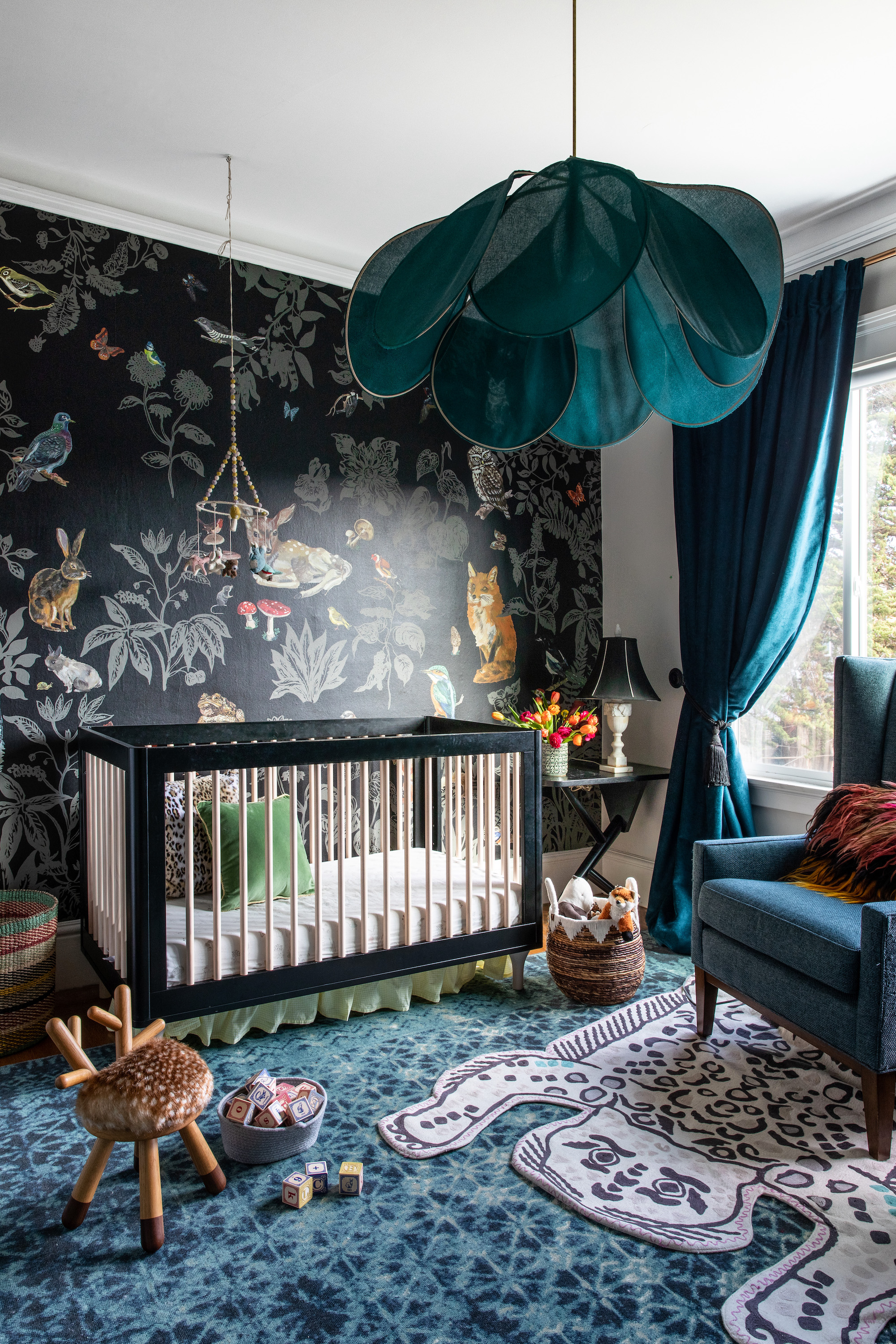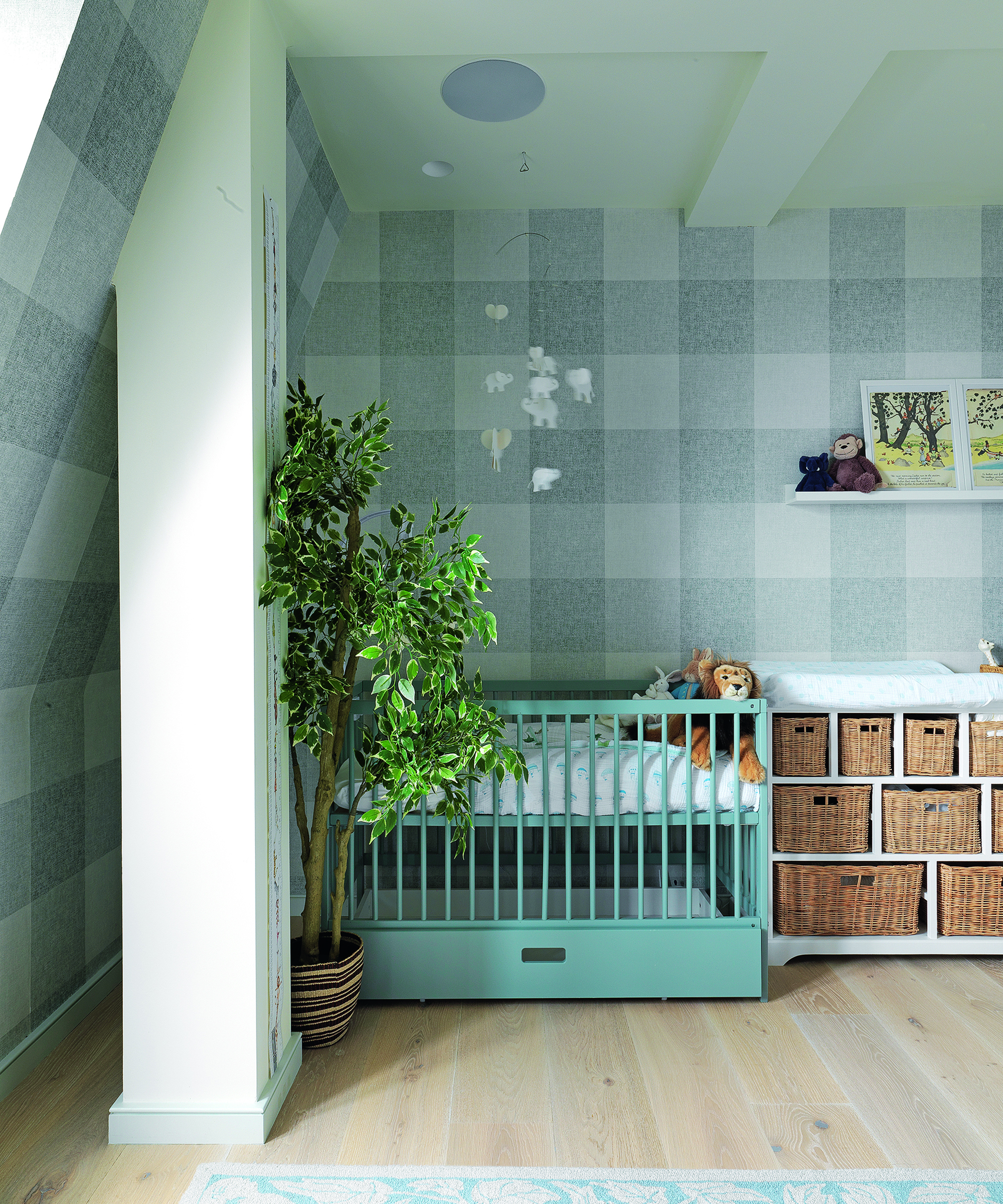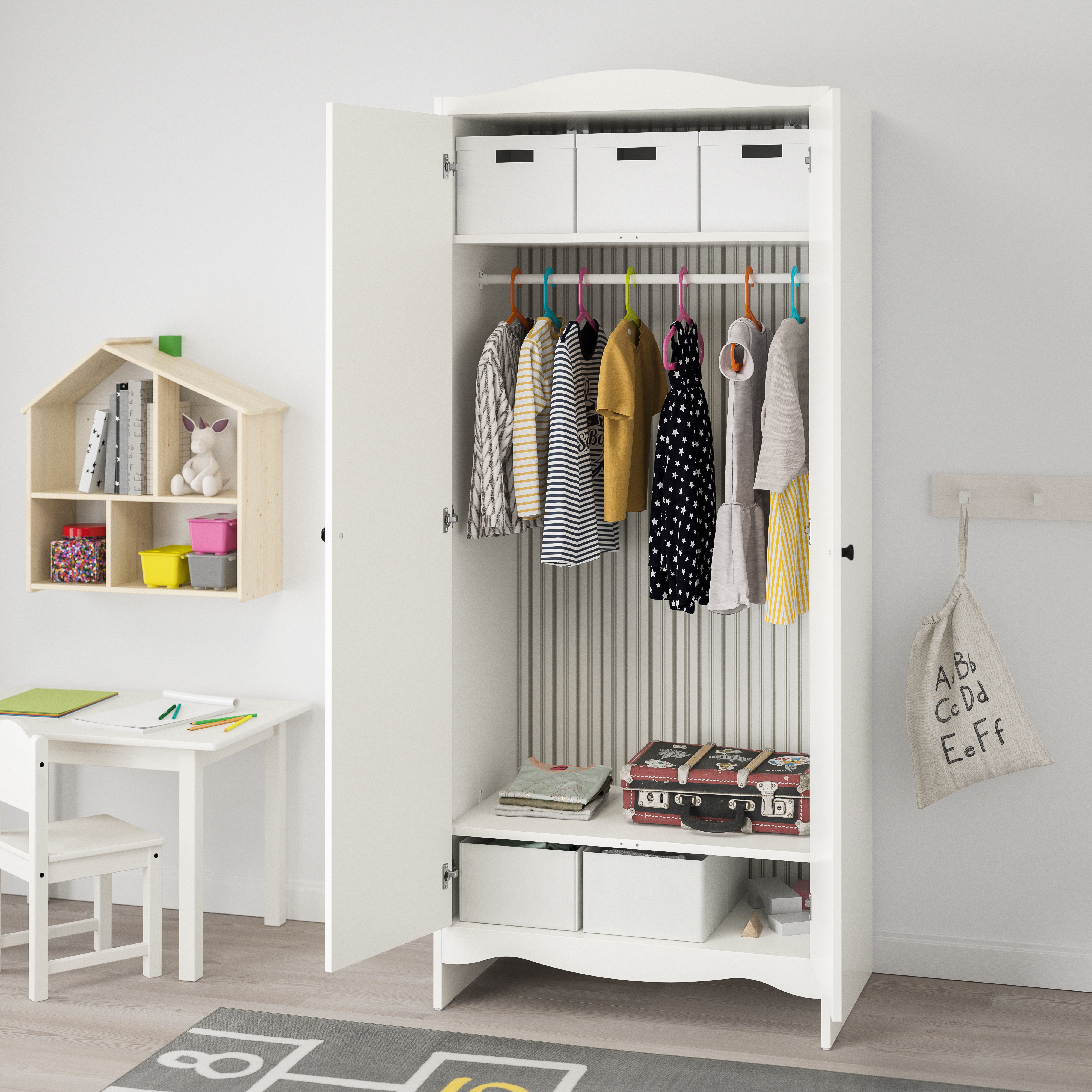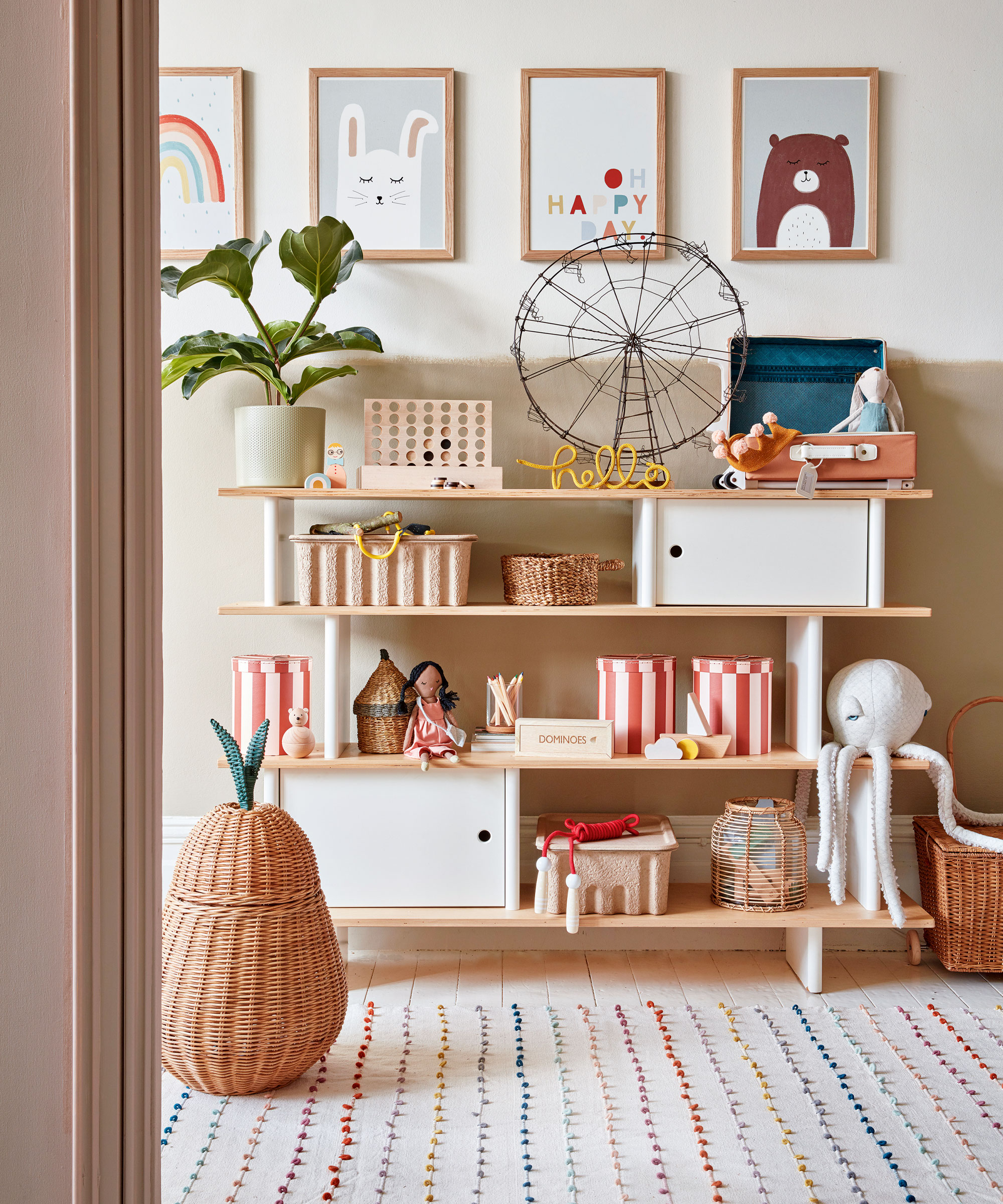Organizing a nursery – 10 ways to create a serene space
Enlist these expert tips for organizing a nursery to make life as a new parent as easy as possible

Organizing a nursery in advance of a new arrival is time well spent. Keeping things neat and tidy minimizes stress caused by misplaced essentials and unnecessary clutter, leaving parents free to focus on what matters most – your baby.
Like with all nursery ideas, it’s important to consider how the home organization ideas you put in place will grow with them. It is always useful to try and incorporate as many storage ideas as possible. Babies themselves might not take up a lot of space, but their stuff certainly does, and will do for the foreseeable future, too. Assigning everything a home will mean you can find items easily, whatever time of day it is.
We’ve spoken to professional experts to get the best bedroom organization tips and advice, so you can start organizing the nursery of your dreams, and hopefully that of your little one, too… providing they sleep, of course!
Organizing a nursery
Whatever systems you decide upon when organizing a nursery, safety must always remain the number one priority, so be sure to research all things related to baby-proofing as job number one.
‘Going all-in on safety doesn’t mean compromising on style – the goal is to create a stylish, practical nursery that reflects your personality, vision and values, put together in the absolute safest possible way for your baby’, says Justin Segal of Storkcraft.
1. Decide on a practical layout

In the same way you would when organizing a playroom, think about how you want to use the space break it down into zones by arranging items accordingly – diaper changing station, dressing, feeding, playing and so on.
Doing this provides structure and creates a nice sense of flow, plus you’ll have a clear idea of what needs to go where. This will help you stay on top of organization going forwards’, says home organizer Emma George of Declutter with Emma.
Whatever layout you decide upon, be sure to keep the floor clear at all times to ensure there are no trip hazards and don’t forget to factor in lighting, as well.
‘A soft night light will prevent you stumbling around in the dark during those night-time feeds and a small reading lamp will make bedtime stories much easier to read’, says Cydney Ball, assistant buyer of nursery at John Lewis.
2. Customize the closet
When organizing a nursery, closet organization ideas are a great place to start. Once you’ve established an effective storage system here, you’re well placed to work out what you need elsewhere in the room.
Shelves tend to be more practical than hanging space when it comes to storing baby items in a closet. Having said that, choosing a design that has hanging rods included is a cost-effective decision – you’ll need them soon enough. In the meantime, consider hanging cubby-style organizers to utilize the space. Alternatively, consider installing shelves above and below a single rod and line them with toys, nappies, seasonal clothing and so on, neatly stored in clear, stackable containers.
For those baby clothes that do need hanging, Rikki Kaye of Pish Posh Baby recommends you ‘hang in order of shortest to longest: first tops, then pants, then rompers and dresses. Be sure to use only one type of hanger to keep it neat’. It’s also worth investing in clothes dividers with ages printed on them so you can grab what you need quickly and easily.
3. Set up a changing station

You’re halfway through a diaper change and realize your wipes are stashed halfway across the room… a situation best avoided.
‘Create a designated changing station and store items like diapers, wipes and creams in open top containers so you can grab what you need easily with one hand’, suggests professional home organizer Britnee Tanner.
The experts at Schnuggle add: ‘make sure you position your diaper disposal system within easy reach of your changing station, so you don’t have to leave baby unattended to dispose of dirty ones’.
For diaper changing during the day, save yourself the hassle of running back and forth to the nursery by investing in a light portable caddy. Fill it with changing supplies and move around the house as you – and baby – please.
4. Prioritize access to often-used items
The key to organizing a nursery efficiently is to keep your most-used items close to hand – less rummaging around to find what you need (particularly important when it’s the middle of the night and you’re in desperate need of a thermometer, for example). A bonus is that it’ll keep the space feeling serene and tidy, too. How you do this depends on what storage you’re working with, but it generally makes sense to work from the top down.
‘Reserve top, easy-access shelving for frequently used items, such as socks, hats, burp cloths, pacifiers, teething items and so on. Middle shelves are useful for storing current clothing, while bottom drawers can hold items you don’t need that often such as extra blankets, cot sheets, sleep sacks and overflow supplies. The same applies to drawers; be sure to use dividers to keep everything neat and tidy’, says professional organizer Lucy Mansey @organisedbyLucy.
Professional organizer Stephanie Linn of Find Your Tidy adds: ‘If you’re storing extra supplies, position the most recent purchases at the back and bring the previously purchased items forward. This helps track your inventory, so you don't buy extras’.
5. Leave room to grow

Choosing furniture that will suit your child as they grow will save you time and money in the long run – they won’t be babies forever, sadly. Good examples include cribs with removable sides and changing tables that double up as a chest of drawers.
‘Look for a changing mat with safety straps so you can secure it to the top of the drawers and avoid it slipping about’, advises Zaeem Chaudhary, architectural draftsman at AC Design Solutions.
You could also consider investing in ‘multipurpose’ nursery furniture, particularly useful if you’re working with a small space.
‘Items to look out for include chests with a built-in changing topper, cribs that have an attached changing table and storage, and double dressers that are compatible with changing toppers. These are all great items to consider when needing to maximize on nursery space, efficiency and functionality’, says Justin Segal.
6. Choose cubby-style storage
Shelves with cubbies are especially useful for nurseries (and when organizing a playroom, for that matter) as they can be easily adapted to suit your child’s needs over time.
Open boxes that fit the cubbies can be bought for easy tidying. They’re useful for storing overflow blankets and organizing clothes in early months and easily adapt to organizing toys, sports equipment and craft supplies as your child grows older.
7. Dedicate space for future clothes

Whether they’re hand-me-downs, gifts or you’re simply well-prepared, you’re likely to have an overflow of clothing and toys for the future. While these don’t need prime storage space, you’ll be amazed at how quickly you’ll need them, so choose somewhere close by, ideally in the nursery itself, the top of the closet or under the bed, for example.
Organize by size and store them in labeled bins or baskets. That way you can simply move the baskets around as you need – one in, one out.
8. Make wall space work overtime
An easy way to claim back floorspace in a nursery, and keep it clear, is to think vertically. Shelving can hold good-looking items such as prettily packaged creams, toys, books, baskets and boxes and still look beautifully stylish, while over-the-door bedroom organizers and hanging cubby-style storage are handy for hiding away less sightly essentials.
In a closet, consider adding extra shelving which can then be removed in favor of rails as baby gets older.
9. Keep toys within reach

In the beginning, the only entertainment your baby will need is you, but that soon changes… It won’t be long before they’re wanting to explore anything and everything! For this stage you will need to invest in flexible toy storage ideas. Placing age-appropriate toys in open baskets on the floor will keep your mind at rest, while also encouraging independence and creative play.
When organizing nursery toys, consider rotating them so everything isn’t always out at once. This frees up storage space and encourages better play overall. ‘Young children can get easily overwhelmed when they have too many toys to choose from. Reducing what they have so the choice is easier allows their imaginations free reign’, says Sian Pelleschi, APDO Conference Director and founder of Sorted!
10. Schedule a routine sort-out
As we’ve already mentioned, babies grow at an alarming rate. A regular declutter is the only way to stay on top of their ever-changing requirements. Every few months, go through your baby’s clothes and separate it into three piles: what fits now, what can be grown into and what’s been outgrown altogether.
Anything in the first pile should be stored in easy-to-access draws or bins, while items in the second pile can be tucked away and swapped in as baby gets bigger. Any clothes in the last pile can be sold, donated or stored away in vacuum sealed bags (label them by age so you know when to pull them out again). The same technique can be used for toys and books, too.
Not everything has to go – set aside a little storage box (try and limit yourself to just one), perhaps inside the closet or tucked away in a drawer for storing sentimental items. When it’s full, find somewhere else to store it, such as under the bed or in the attic.
What is the best way to organize a nursery?
When organizing a nursery, the main aim is to avoid clutter at all costs. Start by considering how you’ll be using the room; where will the baby sleep, feed, play, diaper change etc. Next, categorize like-items accordingly and keep them together within the room to create clear zones. If everything has its place its quick and easy to put things back, so you’re more likely to maintain a neat and tidy space.
How do you organize a small nursery?
Zoning is an extremely efficient way of organizing a nursery, but when space is limited, zones will likely cross over which can get confusing. To keep things simple, create portable stations (feeding, diaper changing, playtime etc) by grouping like-items together into containers or baskets. These can be stored anywhere in the nursery – or elsewhere in the home – then moved around as you need.
Streamlined, multifunctional furniture is handy in a nursery of any size, but even more so when you’re working with a smaller space. A changing table with shelves below for storing essentials like wipes, diapers and towels is great as it keeps everything you need close to hand – particularly handy when it comes to diaper changes. Don’t forget about space under the crib, either; slide away boxes are perfect for storing shoes and toys, while vacuum bags keep seasonal and/or future clothing in great condition.
Babies go through a lot of clothes, and very quickly, too. One way of saving on storage space is to organize clothes by size and stack them neatly in boxes – open ones are ideal for easy access. Store those containing clothes your baby has yet to grow into in a separate area of the home, then simply swap it in, and remove the box containing the previous size. It sounds simple, but it’s an extremely effective space saving hack.
Sign up to the Homes & Gardens newsletter
Design expertise in your inbox – from inspiring decorating ideas and beautiful celebrity homes to practical gardening advice and shopping round-ups.
For 10 years, Tara King worked as a Content Editor in the magazine industry, before leaving to become freelance, covering interior design, wellbeing, craft and homemaking. As well as writing for Ideal Home, Style at Home, Country Homes & Interiors, Tara’s keen eye for styling combined with a passion for creating a happy – and functional – family home has led to a series of organization and cleaning features for H&G.
-
 Miley Cyrus breaks a cardinal decorating rule with her 'floating table' – her unexpected layout transforms a dead space into a stylish breakfast area
Miley Cyrus breaks a cardinal decorating rule with her 'floating table' – her unexpected layout transforms a dead space into a stylish breakfast areaThe singer tosses aside the maxim that furniture shouldn't be floating in the middle of the room with an innovative kitchen layout
By Sophie Edwards Published
-
 It’s a concept straight out of a fashionista's playbook, but I used the Sandwich Method to organize my kitchen shelves – it’s never looked sleeker
It’s a concept straight out of a fashionista's playbook, but I used the Sandwich Method to organize my kitchen shelves – it’s never looked sleekerIt transformed messy to mesmerizing in a matter of seconds
By Punteha van Terheyden Published
-
 7 dorm room organizing rules for less clutter and more space
7 dorm room organizing rules for less clutter and more spaceExperts offer their top tips for creating a well-organized dorm room, no matter the size, space, or layout.
By Ashley Chalmers Published
-
 How to maximize storage in a small or shared dorm room, according to pro organizers
How to maximize storage in a small or shared dorm room, according to pro organizersFind out all the hidden storage zones you might never have noticed
By Ashley Chalmers Published